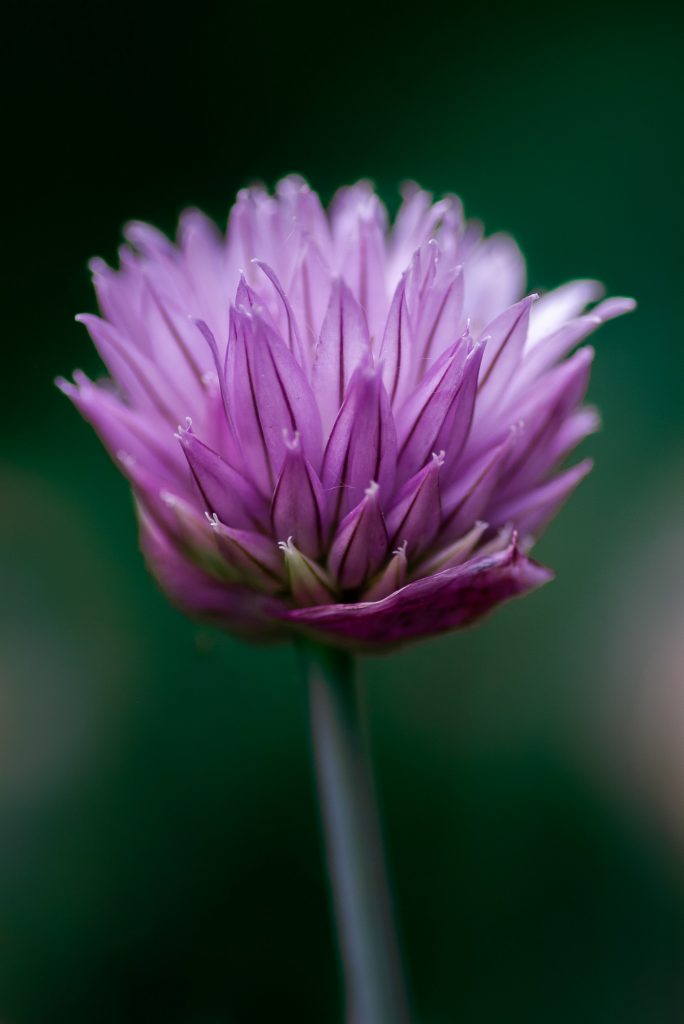Garlic Chives vs Chives: What is the Difference? It’s easy to mistake garlic chives and chives with each other. They have very similar names and largely similar purposes, they are both herbs. The question, though, is, what is really the difference between the two?
Garlic Chives and Chives are separate species from the same genus which means they are closely related but not the same plant. They have a similar appearance with both plants having narrow leaves and circular flowers that sit on top of a stalk. The main difference in appearance is garlic chives have a white flower with flat strappy leaves while chives have a purple flower with hallow rounded leaves.
In addition to the differences in physical appearance, there is a significant difference in flavor, garlic chives have a mild garlic-like flavor, while chives have a flavor that has a distinct onion character.
About Garlic Chives
Garlic chives, Allium tuberosum, are also referred to as Chinese chives and used as both an ornamental plant and a herb in cooking. It is most commonly used in cooking to add a subtle garlic flavor to dishes based on egg and seafood, though it is also used in some sauces.
The plant is a member of the onion family which includes other edible plants such as garlic, onions, and leeks. The plant itself is native to southwestern regions of China and is thought to have been cultivated for at least 4,000 years. It is commonly used as a medicinal plant and features a number of health benefits which include it being rich in a range of vitamins such as Vitamin A, B, C & K. It is also a good source of dietary fiber and trace elements, including Calcium, Zinc, and Iron.
The plant itself is a hardy herbaceous perennial that is suitable for growing in zones 3 to 10. The plant generally grows in modest-sized clumps that typically reach a height of 10-20″ tall. The plant typically puts out flower spikes in the Autumn though this can vary somewhat.

When bruised or crushed, the leaves (and other plant parts) have a strong garlic scent. In warmer climates the plants are evergreen but in colder climates they die back to the ground over the winter. Just like chives, cutting the leaves back encourages new growth. Leaves can be harvested to eat anytime they are green.
The plants themselves are easy to grow and perform best in full sun. The plants can be started off by sowing seeds in clumps of 10 or 15 seeds in seed trays. The best time to sow seeds is in early to mid-spring when the weather is warming up.
Seeds should be sown at a depth of 0.5 inches in seed raising mix. The seedlings will emerge 7 to 14 days later in most cases and will need to spend 6 weeks or so in the seed trays before being planted out in the garden. However, it is important to note that these plants can stay in the seed trays for quite a long time if necessary before they need to be planted out.
When planting them in the garden the plants should be spaced 10 to 12 inches apart to allow them room to expand and grow. The soil should ideally be rich, moist but well-drained. To ensure that the soil retains its moisture it is advisable to mulch thickly. Once established Garlic chives require very little maintenance apart from the occasional watering every now and then.

About Chives
Chives, Allium schoenoprasum, is a far more common plant in the western world and is sometimes called Onion chives. Chives are used in a similar manner to garlic chives, as a fresh herb that often goes well in various soups, fish-based dishes, and dips. It also has similar health benefits to garlic chives and is a good source of Vitamin K, Potassium, Iron, and Calcium.
It is believed to be native to Asia and there are reports that Marco Polo brought the plant back from china, however, this seems to be unlikely given that there are reports that Ancient Romans used the plant for medicinal purposes. This suggests that the plant was known in Europe long before the 13th Century when Marco Polo returned to Europe.
Chives are a similarly hardy plant, like garlic chives that can be grown successfully in zones 3 to 11 and will generally produce flowers in early summer. Though the plants have hollow stems I have found that after a few seasons the plant can produce foliage that is flat like garlic chives. This generally occurs when the plant has died back completely, to read more about this click here.
In terms of growing conditions, chives prefer much the same conditions as garlic chives and will grow from seed readily. The seeds can be grown successfully using the same directions provided for the garlic chives.
